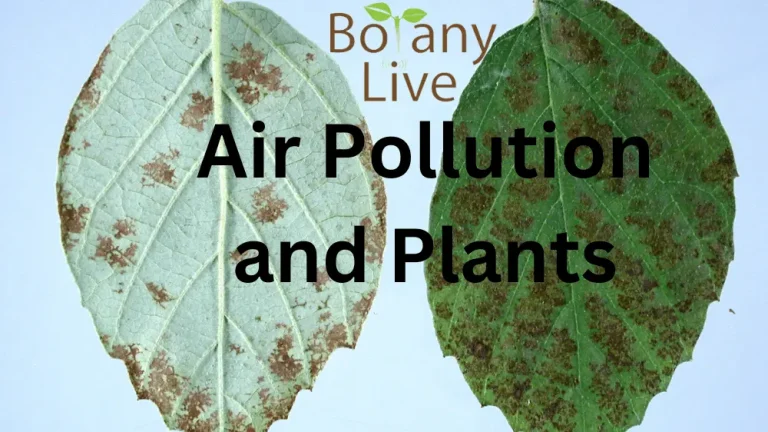Determination of Herbicide Residue from Soil | 4 ways
Determination of herbicide residue is the measure to detect its toxicity level for plants and animals. Labels on herbicide containers often guide the interval between applying and planting a sensitive crop to know the effects of herbicide residues.
However, in some cases, the determination of herbicide residue in the soil is important, either label does not properly guide or missing, or previous experience shows great potential for crop injury. All this pose difficulty in managing herbicide residue.
Determination of Herbicide Residue in Crops
It is needful to monitor herbicide residues to assess their accumulation (bio-accumulation), bio-magnification, and buildup in the ecosystem [1]
Following are the methods and techniques by which we can perform the determination of herbicide residues in the soil or plant.
Methods of Determination
Determination by Bioassay
Determination of herbicide residue and analysis of soils is expensive and is carried out to manage the impacts of herbicides. However, some scientists believe that it does not reveal the true picture of soil status. An inexpensive and effective method to measure the carryover is bioassay [2]. In bioassay or biological assay, test plants similar to the crop plants in the field are tested. This technique does not provide the exact measure however, it shows whether this level is harmful or not. It includes the following simple steps.
Collection of soil samples for determination of herbicide residue:
The problem of residues is not uniform thus determination of herbicide residue in the field is a tough job. Field entrances, edges, turnaround areas, and terrace channels are hot spots. For analysis, take a soil sample from the test areas. Use a soil probe of 1-3 inches in diameter to take almost 11 lb of moist soil as a composite sample from the target hot spot.
Shifting of the samples to labs
Samples should be tested within 2 days of collection or must be shifted to the lab and stored in a freezer. Under normal room conditions, biotic and abiotic degradation may start.
Preparation of soil for bioassay
Spread the soil to let it dry to a workable condition. Break the clods and prepare a uniform sample. There should be a chemical-free sample (control) for the determination of herbicide. You can collect control samples from the garden where there is no use of herbicides in the past.
Blending with charcoal
Divide the soil sample into two equal halves (almost 5 lb) and apply a teaspoon of activated charcoal (coconut charcoal briquettes). Residues (if present) will be absorbed by coconut charcoal and given an herbicide-free sample for the determination of herbicide residue.
Plantation of bioassay
Use the following protocol to sow seeds in the pots [2];
Use two flower pots or perforated containers for planting. One container for coconut shell charcoal treated with herbicide-free treatment (control) and the other for soil from the field before the determination of herbicide residue.
Label the both containers
- To test carry-over (e.g. for atrazine), plant six soybean seeds in each container ¼ inches deep in the soil.
- Thoroughly water both containers.
- Cover the control and coal briquettes treated container with plastic food wrap until germination.
- After emergence, remove the plastic wrap, and water as needed.
- Thin the beans to three plants per container at a uniform distance. Thinning at an early stage will reduce the amount of herbicide absorbed by discarded plants. This will make a determination of herbicide residue an easy job.
- Place the containers in sunlight for optimum temperature (75ᵒF). Sunlight is necessary to develop injury symptoms.
- Injury symptoms will develop within three weeks.
- The symptom will only appear in plants growing in contaminated soil.
- A plant growing in soil with carry-over effects may develop one or more symptoms (Table).
- In this case, you have to consider switching the herbicide or changing your cropping scheme.
If all the test plants die off in both containers, the disease could be the cause.
| herbicide | Mode of Action | Symptoms |
| 2,4-D, Dicamba, Fluroxypyre | Growth regulators | Narrow-leaf species: Leaf rolling, stem bending Broadleaf species: Leaf strapping and curling, epinasty, brittle stem, the callus tissue formation. |
| Pendimethalin, Acetochlor | Seedling growth inhibitors | Narrow-leaf species: Thick red/purple in colour. Stunted, onion leafing Broadleaf species: stunted root growth, crinkled leave, the callus on stem |
| Thifensulfuron, Nicosulfuron | ALS inhibitors | Narrow-leaf species: interveinal chlorosis, bottlebrush roots Broadleaf species: stunted growth, shortened internode, red veins on the underside of leaves. |
| Atrazine, Metribuzin | Photosynthesis inhibitors | Narrow-leaf species: Chlorosis and necrosis of leaf tips Broadleaf species: Chlorosis and necrosis of leaf tips, brown speckling near leaf edge. |
| Sulfentrazone, Fomesafen | Cell membrane disruptor | Narrow-leaf species: Stunted growth, veinal chlorosis, and necrosis Broadleaf species: stunning, chloris, leaf crinkling |
Determination by Chemical Analysis
Soil or plant samples are collected from the field. These samples are carried out and tested in the laboratory for the detection of herbicides.

Field or Plant Bioassay
A test strip of the crop is intended to be left till maturity. Test crop plant at maturity to determine the carryover dose of chemicals present. Similarly, soil samples were collected and sent to the commercial laboratory for the accurate determination of herbicide reside contents.
Random Soil Sampling
This method is more common and reliable. Samples from the saline spots and poorly drained or eroded spots are not taken.
Topographic soil sampling
If the field is uneven in soil type, salinity, fertility, and other topographic features, the soil is divided into split plots. Samples are taken from each plot randomly and tested for possible residues.
Conclusion
Content of Herbicide in soil, plant, or animal is necessary to know the level of toxicity of herbicide. Herbicide residues move freely in soil, plant, animals, and atmosphere. Herbicide determination is done by determination of Bioassay and Chemical Analysis.
References
- Sondhia S. 2014. Herbicides residues in soil, water, plants, and non-targeted organisms and human health implications: an Indian perspective. Indian Journal of Weed Science 46(1): 66–85.
- Robert N. Klein., Mark L. Bernards, and Patrick J. Shea. 2008. A quick test for herbicide carryover in the soil. The University of Nebraska-Lincoln Extension, Institute of Agriculture and Natural Resources.
I’m Dr Qaiser Maqsood (PhD), a dedicated researcher and expert in Biological Sciences, Gardening, Bio-Diversity, Ecology, and Environmental Sciences. I’m much concerned about Environmental Pollution, Climate Change, Plantation, Gardening, and Global Warming. My passion is to explore innovative solutions in all these fields.
Be aware that we have ONLY ONE EARTH. Protect it!!






